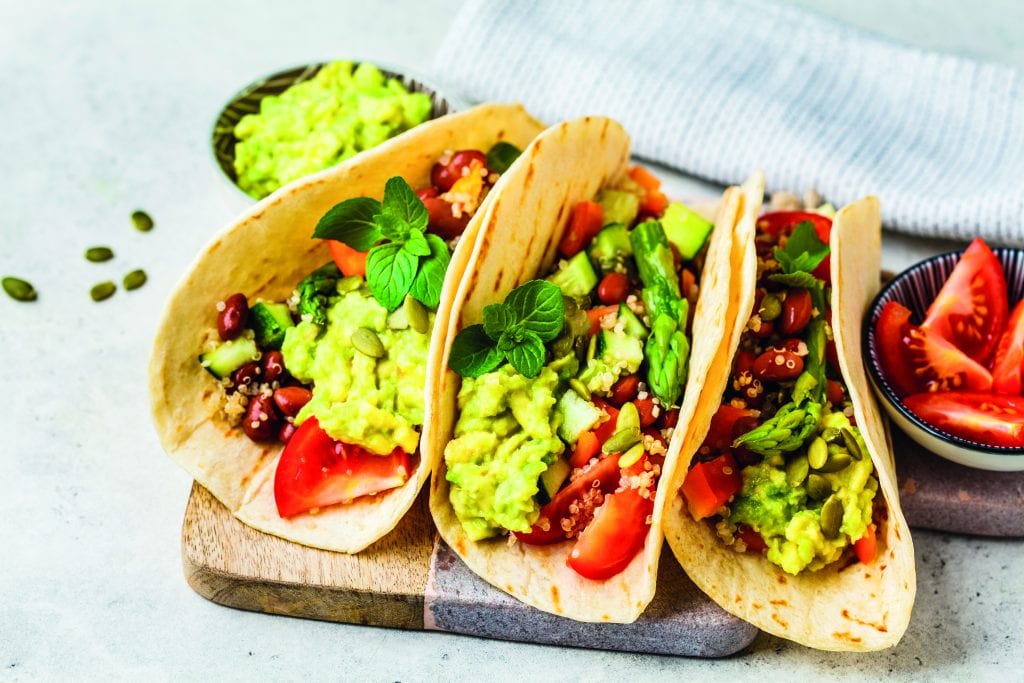
Nutrition in a nutshell
What’s happening in the world of nutrition today? Here are four key trends identified in the Global Wellness Institute Initiative Micro Trends 2025
Reading time: 2 minutes
In 2025, global nutrition trends emphasise sustainable, health-centred food choices. Consumers are gravitating toward nutrient-dense, clean foods and demanding more transparency in sourcing. Key trends include regenerative agriculture, personalised nutrition, gut health, toxin-free food and alternative proteins. Together, these reflect a growing awareness of the connection between diet, longevity, and environmental responsibility.

TREND 1: Nutrient Density and Soil Health
The Foundation for a Healthier Future
Nutrient-dense foods — those rich in essential vitamins, minerals, and phytonutrients — are in high demand. This movement is closely tied to soil health, as research shows that nutrient-rich soil produces more nourishing crops.
Industrial farming has degraded soil quality, leading to nutrient loss in food. In contrast, regenerative organic agriculture improves biodiversity, carbon storage and nutrient cycling, which enhances the micronutrient profile of crops. This has spurred innovation in the food and beverage industry:
- Functional foods with verified higher levels of antioxidants and minerals.
- Transparent sourcing with emphasis on regenerative practices.
- Advanced nutrient testing tools for consumers.
However, concerns about ‘greenwashing’ have emerged as companies misuse the term ‘regenerative’. Certifications like the Regenerative Organic Certification (ROC) address this by setting strict standards for soil health, animal welfare, and social equity.
Scientific studies increasingly confirm the soil-human health link. Expect to see more nutrient-dense ingredients in teas, juices, and plant-based products as this trend grows.
TREND 2: Personalised Nutrition & Gut Health
Aligning Your Diet with Your Biology
As the connection between gut and brain health becomes more widely understood, consumers are looking to personalise their diets to support physical and mental wellbeing. The ‘gut-brain axis’ — the communication network linking the gut microbiome and nervous system — plays a major role in cognitive and emotional health.
But there is no one-size-fits-all approach to diet. Personalised nutrition takes into account genetics, lifestyle and environment, offering tailored tools and supplements for individual needs.
To support gut health naturally:
- Eat a wide variety of whole, plant-based foods.
- Limit processed foods and artificial additives.
- Diversify your diet to promote a healthy microbiome.
Working with a dietitian or gastroenterologist can help create a personalised gut health plan. The growing popularity of this trend reflects a shift toward proactive, informed health management.

TREND 3: The Rise of Alternative Proteins
A Sustainable Protein Revolution
Concerns over climate change, health and food security are changing how we view protein. While protein remains essential for muscle repair, immune function and metabolism, traditional animal-based sources face criticism for their environmental toll.
Alternative proteins — plant-based, fungi-derived, algae-based and cultivated — are gaining popularity for their sustainability and nutritional benefits.
Why alternative proteins matter:
- Environmental Impact: Animal agriculture is responsible for significant greenhouse gas emissions and resource use. Shifting to alternatives could cut global diet-related emissions by up to 80%.
- Health Benefits: Plant proteins tend to be lower in saturated fats and higher in fibre. Advances in technology are improving their amino acid profiles, making them nutritionally comparable to animal proteins.
Types of Alternative Proteins:
Plant-based: Soy, peas, lentils, grains.
Mycoprotein: Fungi-based options like Quorn.
Algae: Spirulina and chlorella are protein-rich and antioxidant-loaded.
Precision fermentation: Uses microbes to produce animal-identical proteins without livestock.
This shift isn’t just a trend, it’s a pivotal transformation in food production that supports human and planetary health.

TREND 4: Cleaner Eating & Toxin Awareness
Toward a Toxin-Free Food Supply
A 2025 Kaiser Family Foundation survey found that 58% of Americans want stricter controls on food-related chemicals. Consumers are increasingly concerned about toxins in foods — such as pesticides, artificial dyes and industrial additives— as well as in water, cosmetics and packaging materials.
Of particular concern are PFAS (‘forever chemicals’), which are linked to cancer, liver damage and developmental issues. The EPA notes that nearly all Americans are exposed to these chemicals from birth.
Many consumers are adopting a proactive approach known as ‘daily detox’. This means supporting the body’s natural detoxification systems through diet and lifestyle.
Strategies for reducing toxin load:
- Avoid ultra-processed foods.
- Buy certified organic produce and products.
- Stay hydrated and limit alcohol.
- Eat fibre- and antioxidant-rich foods (beans, vegetables, herbs, green tea, etc.).
- Sweat regularly (exercise or sauna).
- Get quality sleep to support brain detox.
- Consult health professionals if symptoms persist.
The 2025 nutrition landscape is defined by a deeper understanding of how our food, bodies and environment interact. From improving soil health and personalising nutrition to reducing toxins and embracing alternative proteins, these trends mark a shift toward a more conscious, science-informed approach to eating.
By focusing on nutrient density, gut-brain health, food safety, and sustainable protein sources, we can extend not only our lifespan, but our healthspan.
Download the full 2025 nutrition report at: globalwellnessinstitute.org


